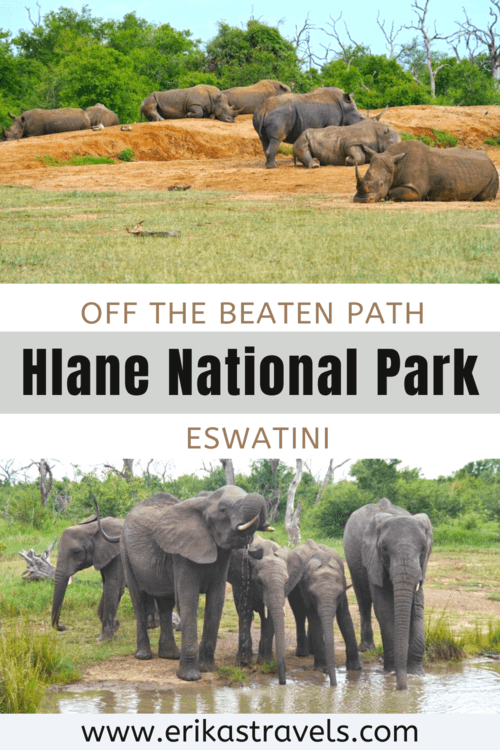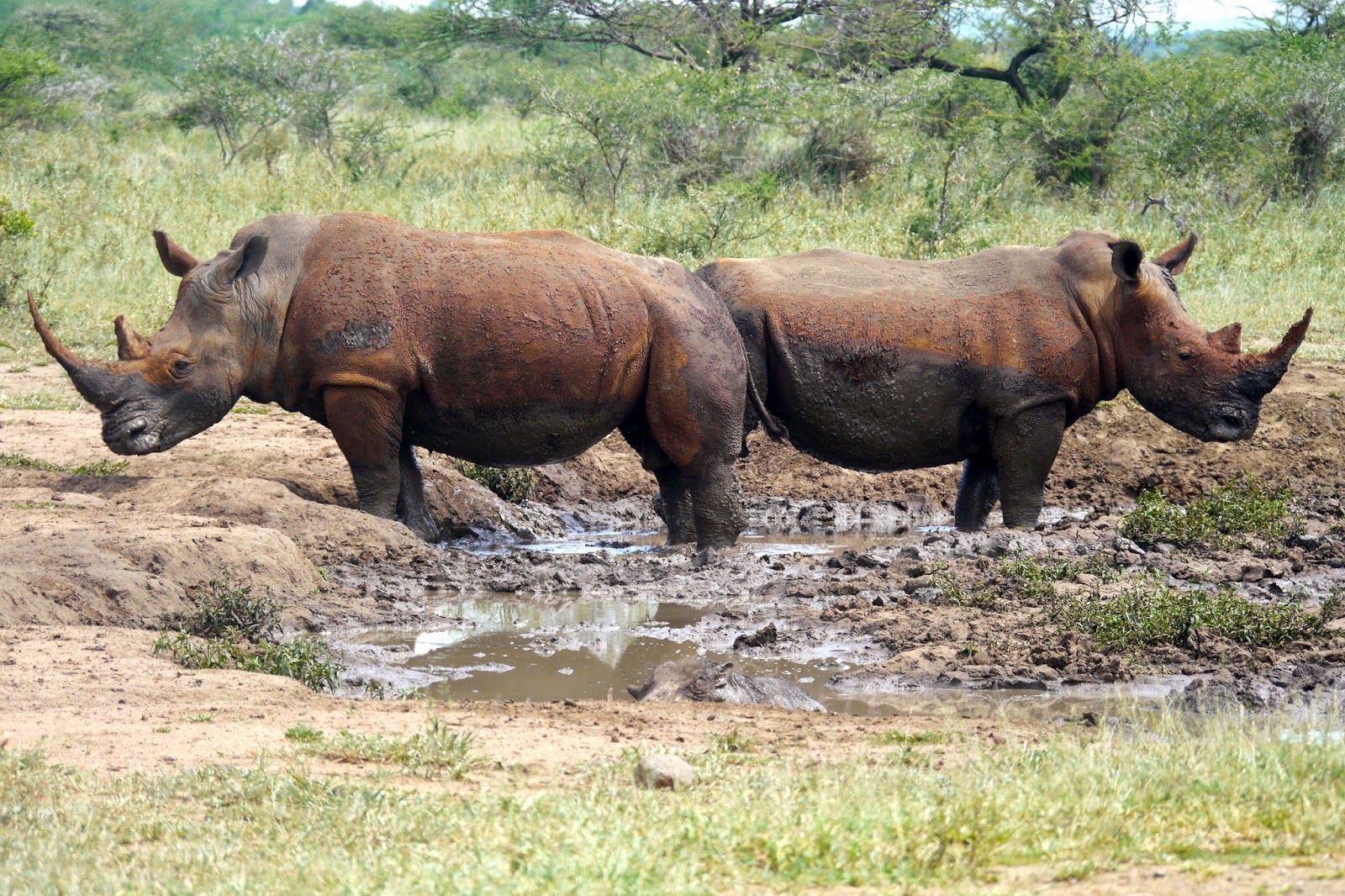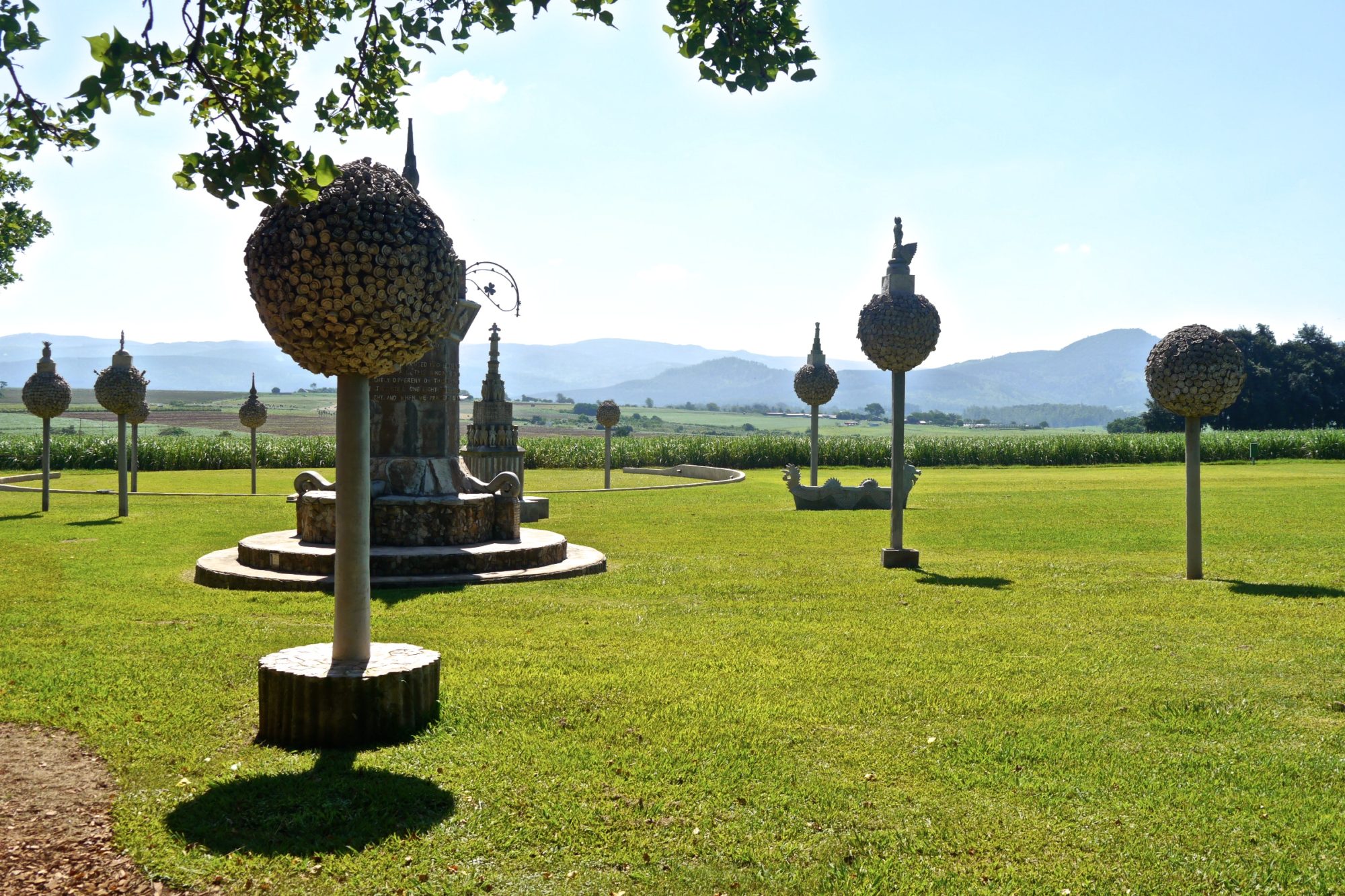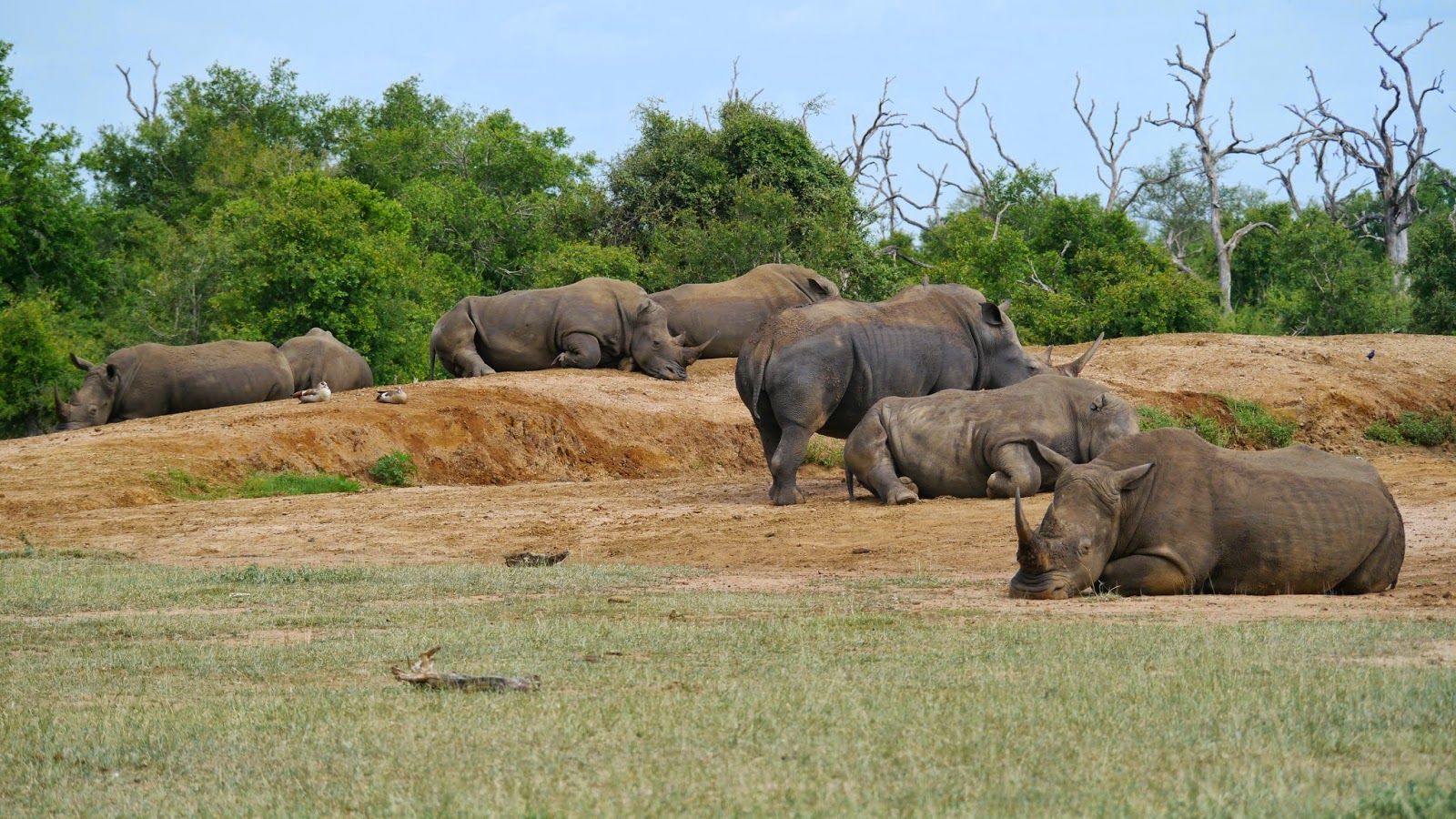
Hlane National Park Safari in Eswatini
In the siSwati language, the word ‘Hlane’ means wilderness. And the name is certainly apt. For the call of the wild doesn’t get much louder than in Hlane Royal National Park—a relatively obscure little conservation area located in Eswatini’s northeastern corner.
Since Dan and I planned our trip to Southern Africa during the rainy season when animal sightings are more difficult to come by, we didn’t expect much from our visit to Hlane National Park.
But, from the moment we entered the gates of the park, Hlane set us up for one big adventure after another.
HLANE NATIONAL PARK: A HIDDEN GEM IN ESWATINI
Until 1967, Hlane National Park was once private hunting ground for the Swazi royals.
Today, it is the largest national park in Eswatini (formerly known as Swaziland) and one of the country’s premier tourist attractions.
Hlane Royal Park lies less than two hours from South Africa’s renowned Kruger National Park, the two wildlife areas couldn’t be any more different from one another. Kruger has always been a well-established and highly publicized romantic getaway for those wishing to catch a glimpse of Africa’s majestic wildlife. The park houses a network of paved roads, eateries and accommodation options that cater to every traveler’s needs. It is large enough to get lost in for days, it spans a variety of different habitats, and it houses some of the highest concentrations of wild animals on the planet.
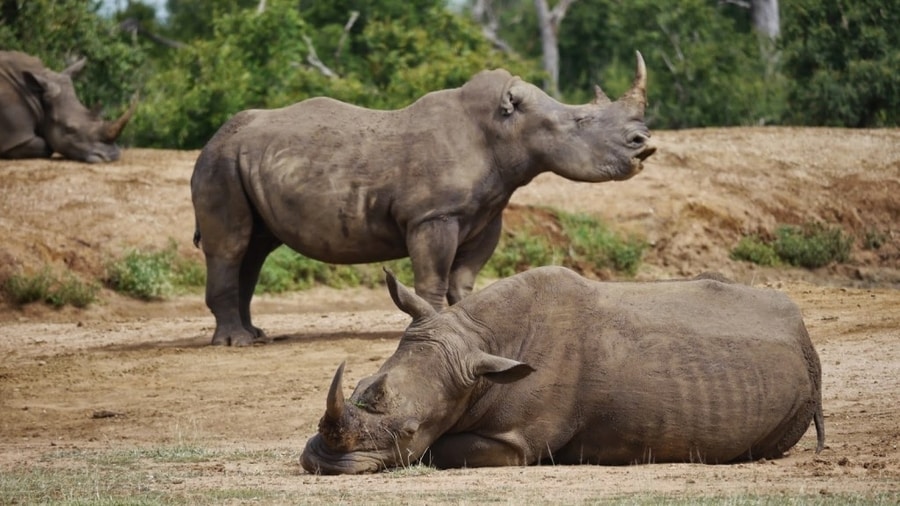
Hlane, on the other hand, sits off the tourist trail and only makes its way onto the itineraries of the intrepid travelers who are drawn to Africa’s tiny kingdom by curiosity. Some would say Hlane sits off the beaten path, though such a description seems far from fitting. In fact, Hlane sits on a path so beaten (by weather and lack of infrastructure) and trodden (by animals), that attempting to drive around on our own in our rented Fiat 500 would have no doubt resulted in disaster.
-
WHERE TO STAY IN HLANE NATIONAL PARK
Hlane National Park contains two main camps: Ndlovu and Bhubesi. During our two night stay in Hlane Park, Dan and I chose to stay in Ndlovu.
Bhubesi Camp is lies outside the endangered species area and is largely a self-catering facility. It provides a quiet nature retreat for those who wish to have a more intimate and self-reliant safari adventure.
Ndlovu Camp, in contrast, is the center of the park’s activity. It offers a lodge, camping opportunities, and a restaurant that overlooks an activity-filled watering hole. It is also the main place from which wildlife tours depart.
ANIMALS AT HLANE NATIONAL PARK
Within its 22,000 enclosed hectares, Hlane National Park is home to lions, leopards, elephants, white rhino, and myriad species of birds.
In order to better protect its diverse wildlife, Hlane Royal National Park is divided into three sections—the rhino section, the lion section and the section housing only game.
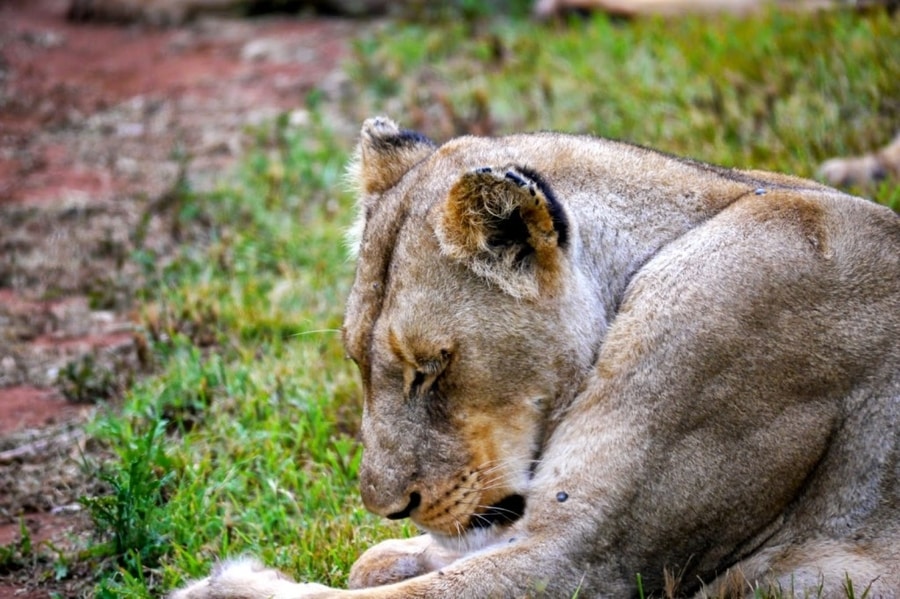
Due to widespread rhino poaching throughout southern Africa, the rangers at Hlane have attempted to maintain a close eye on the animals by enclosing them in an area away from predators and by monitoring them consistently in the relatively small area of park.
OUR SAFARI EXPERIENCE IN HLANE ROYAL WILDLIFE PARK
After taking one look at the roads—with their meter-deep wheel ruts and water-filled potholes—it became apparent that we would have to book a tour in a safari truck if we wanted to have any chance whatsoever of making inroads into the park’s interior. Driving independently, as I had done in Kruger and in Namibia’s Etosha National Park, was out of the question.
So, the next morning, Dan and I woke up at the crack of dawn in time for an early morning safari. First, however, we decided to stop by Ndlovu Camp’s water hole to catch a glimpse of animal activity.
What we saw was incredible.
As the sun rose, the area around us began to take form and come to life. At the waterhole, we saw a cluster of twelve rhinos in a clearing near the camp. They sat merely a stone’s throw from where we were standing.
Unlike camps at some of the other wildlife refuges that I had visited, Hlane had very little protecting our tents from the wild animals. A small fence with two strands of wire was all that separated us from the massive mammals.
We tried not to think of the fact that a thin metal wire stood very little chance of protecting us from a charging rhino.
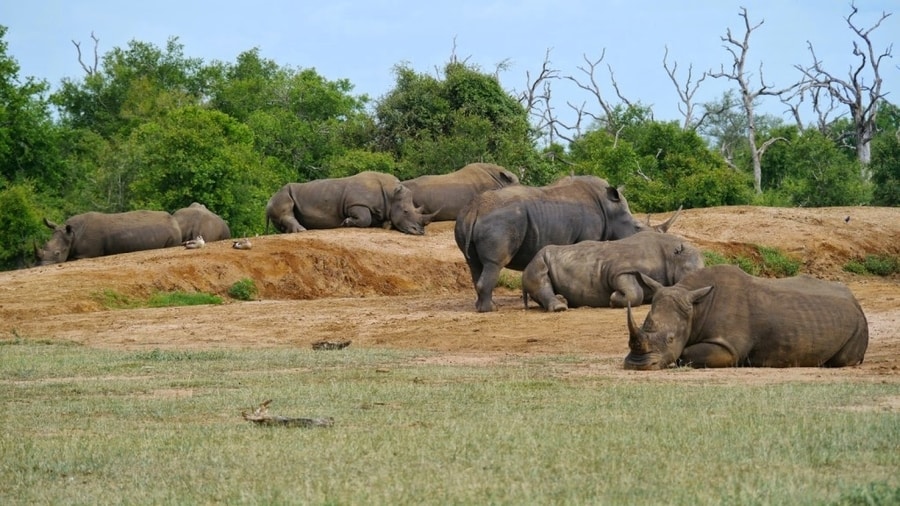
Following our incredible luck with the rhinos, we decided to begin our safari-truck adventure with a foray into the lion area of the park. Our guide warned us right away that lion sightings in the park was not a guarantee—especially in the rainy season when the tall grasses would hinder us from being able to see at a distance.
Yet, thanks to our guide’s keen ability to spot camouflaged animals, it was only minutes before we found ourselves zooming down the park’s potholed roads in the direction of four tan bumps in the grass.
For the second time in the day, we couldn’t believe our luck. Sitting merely a few arms lengths away from our open-air vehicle, sat a black-maned lion with three lionesses. It was arguably the best animal sighting I’d had during my year in Africa and certainly one of the most thrilling moments of our South African trip.
I felt totally and completely vulnerable and unprotected in the truck as we inched closer and closer for a better view.
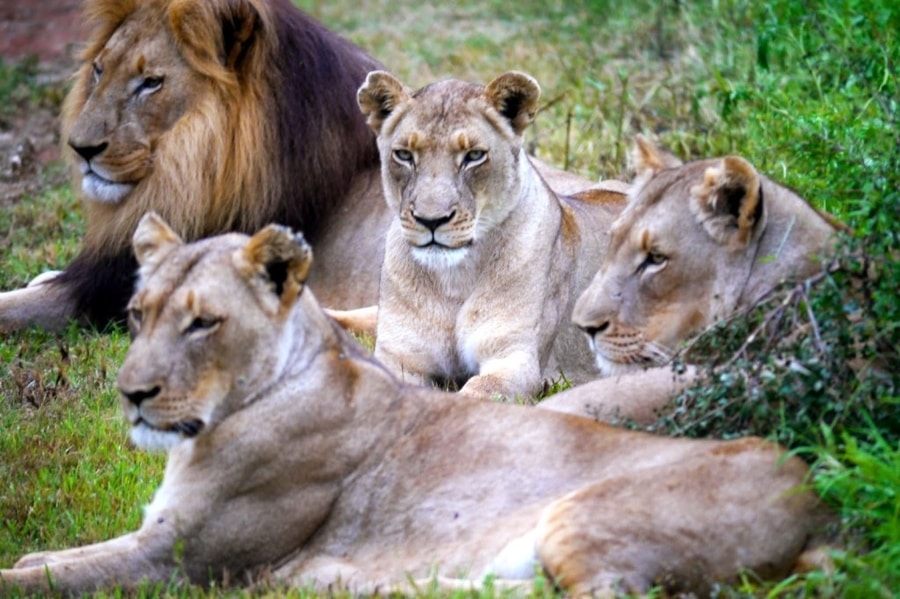
It turns out that the elephants (not the lions or rhinos) were probably the animals we should have been concerned about all along, however.
Merely moments after we reached a safe distance from the lions, I heard the car engine sputtering. I could see a wave of panic wash over the face of our guide as we drove by a herd of African elephants.
The animals were majestic and beautiful. I took out my camera to snap a few photos of them, but I could see that the guide had no interest in absorbing the view or admiring the animals.
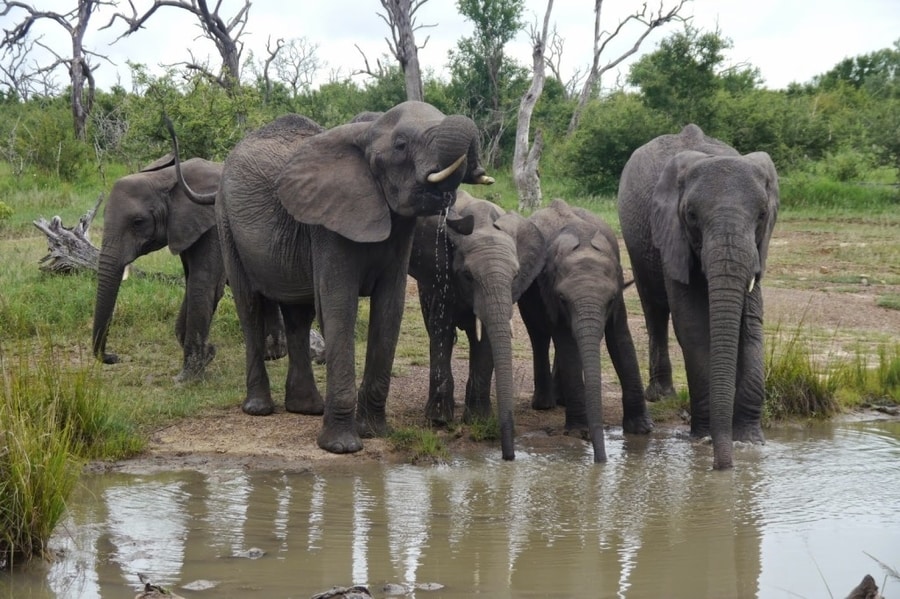
With good reason, I soon learned. Only a few days prior, a massive elephant had knocked over a safari truck. From the incident, our guide had developed a palpable fear of the world’s largest mammals. As I sat snapping photos of the animals, our guide’s sole concern seemed to be getting us out of the elephant area of the park before our car engine failed us completely.
And we barely made it. The car engine sputtered one last time and died completely just seconds after we exited the gates of the park. It was a thrilling and exhilarating finish to yet another successful wildlife adventure.
****
Though we had few expectations before our visit, Hlane Royal National Park just kept delivering. With every bend in the road, a new and unforgettable sighting appeared before our eyes. It was the quintessential African wildlife experience—never dull, often uncomfortable, a bit terrifying and, as always, full of surprises.
***
Note: For useful tips on what to bring on safari, check out Hannah’s overland African Safari packing list.
___________________________
Did You Enjoy This Guide to Hlane National Park? Pin It!
